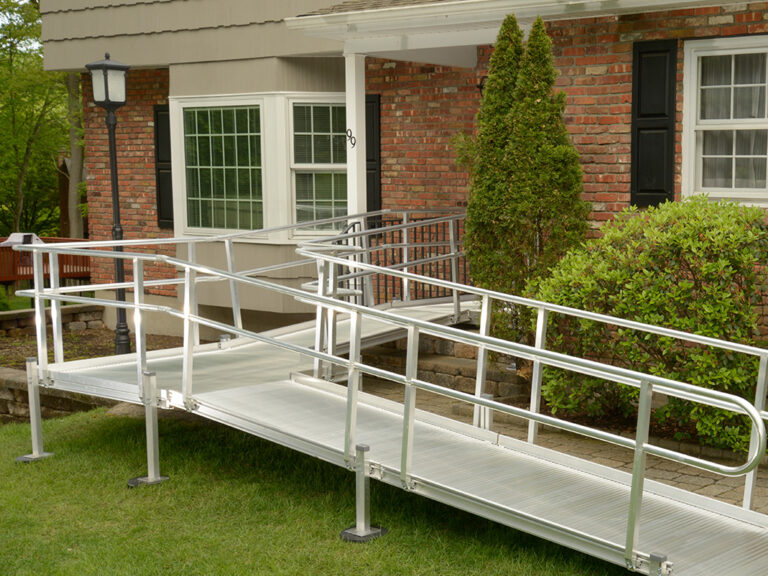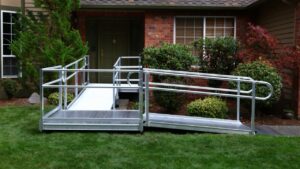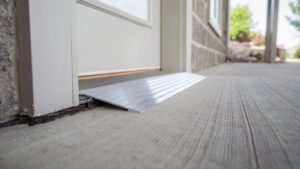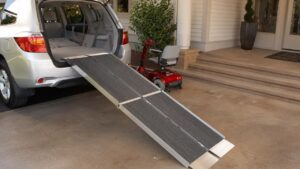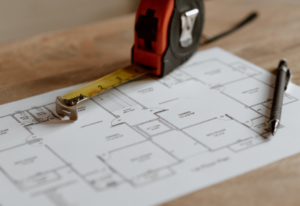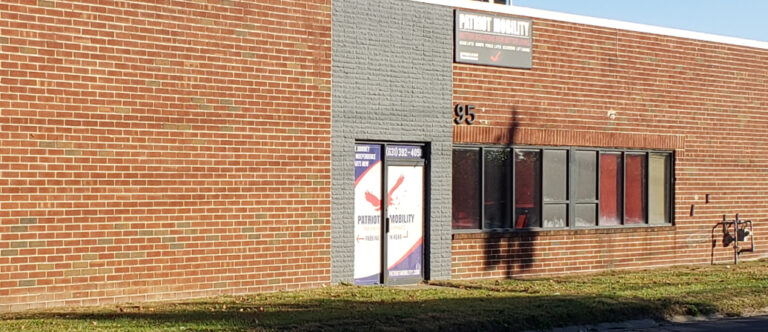Mobility Ramp Q&As
Which ramp is right for my home?
The type and style of ramp depends on what you and your home’s needs. Check with a professional installer and have them evaluate your home to make a proper decision on which ramp to buy.
Are handicap ramps safe for use?
These pieces of equipment, especially ADA ramps are very safe for residential and commercial use. They feature non-slip surfaces, handrails, and low angle inclines.
How long does it usually take to put together one?
It usually it takes a couple of hours for a standard residential ramp to be installed. The time required can be extended depending on ramp length, residential obstacles, and any additional features.
What does it mean for a ramp to be ADA compliant?
ADA ramps are mobility products that adhere to the US government’s ADA guidelines for safety. Commercial grade ramps must follow these laws, however residential ramps don’t have to follow them.
Will I need to have construction work done prior to installation?
Under normal circumstances you won’t need any kind of construction work done. Handicap ramps are assembled onsite and are safely secured in ground.
Are wheelchair ramps an expensive investment?
Standard residential ramps can cost about $1000 and can go well over that amount if there is more ramp needed. These make for a cost-effective accessibility solution since they can last for years.
Is my ramp weatherproof?
Most mobility ramps are built to have some type of innate waterproofing or anti snow accumulation. In addition to that, must ramps also have surfaces that are slip-resistant.
Will it hold high weight capacities?
Portable and threshold ramps are able to hold weight limits of up to 800lbs. Aluminum and Metal ramps can withstand weights well over 2000lbs.



